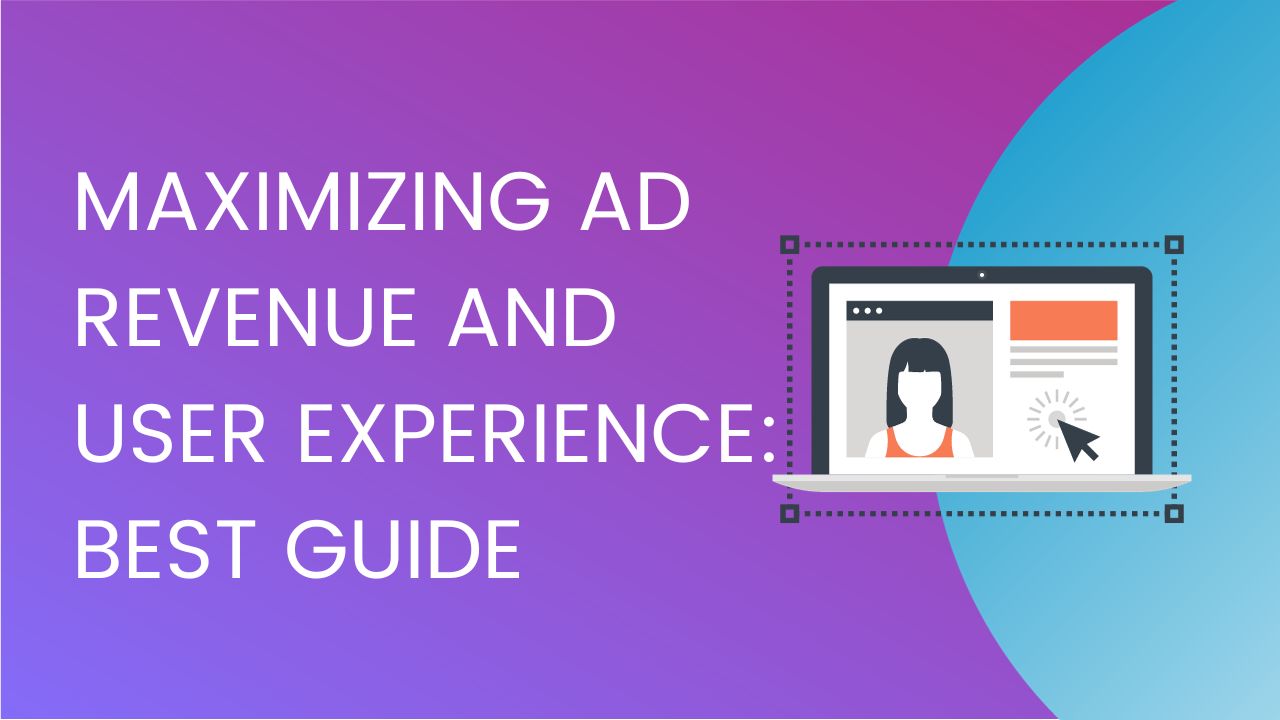
The most popular way for websites to earn revenue through online advertising is by placing advertisements on their sites. While publishers focus more on the quality of their content than on ad placement, it may seem random where they place their ads.
Whether your focus is to increase ad revenue or enhance your site’s user experience, ad placements are super important!
A placeholder is important in ensuring your website is optimized for ad revenue and UX. Ensuring you have enough placeholders, the correct size, and the right placements can dramatically affect the look and feel of your page.
Instead of merely putting up advertisements on your site as most ad networks do, adding placeholders allows you to test which ones perform better. AI-driven ad placements are made with placeholders.
This data is collected based on real user data and later used to serve ads to look-alike users. It means each user gets an individualized ad experience that promotes greater engagement and conversion rates for advertisers and publishers alike.
Balancing user experience with a robust revenue stream from online advertisements is paramount. While it’s tempting to flood your website with ads to increase revenue, ensuring that this doesn’t deter users or diminish the user experience (UX) is crucial.
In this blog post, let’s go step by step on optimizing your placeholders so that you don’t lose ad revenue without downgrading your website’s user experience.
Understanding the implications of ad placements can make the difference between a successful website and a failed one. Strategic ad placement:
Strategic ad placement is pivotal for maximizing both user engagement and revenue. It’s all about positioning ads where they’re most visible without compromising content readability or user experience. Here’s what you need to prioritize while crafting your ad placement campaigns:
Place your ads where they’ll be most visible without hindering the content’s readability.
Different ad sizes and formats can affect user engagement:
With over half of global internet traffic coming from mobile devices, it’s crucial to:
High-quality, relevant ads lead to better user engagement:
So, what exactly is a placeholder?
Placeholders are potential ad spots. Ads are not meant to show up in placeholder spots all the time. You as a publisher get to set up the parameters. It is simply a position where publishers grant us the permit to test tonnes of ad combinations with our ad technology.
What do you get?
Our advanced ad technology can easily locate the best ad combinations and header bidding that will not disrupt the UX.
What about our competitors?
They use the same ad setup on every web page (BORING!). It may include placing multiple advertisements across the entire web page to increase the number of impressions (views).
Having 20+ ads on a page is unquestionably not user-friendly and makes the user want to leave your site at any moment. This raises EPMV temporarily since advertisers bid based on historical data; if historical data indicates that an advertiser should bid high due to past results, they will do so.
The ads will perform worse over time due to ad dilution – too many ads compete on a given page. In light of historical data showing that this site’s ad inventory isn’t as valuable as it used to be, advertisers may now bid less.
The only means by which you can keep EPMV up is by adding more ads! (A Deadly Cycle!)
Google Analytics: For monitoring traffic sources, device type, location, and audience.
Ad Manager dashboard: Checks the earnings of different ad sizes and types by monitoring inventory.
Heatmap: To find the most engaging parts of a website above and below the fold.
Setting placeholders on a website is best done in certain parts. Most websites have around ten to fifteen placeholders and this can even go up to 20+ depending on how long your content is.
The best options are header bidding and then adding placeholders as we scroll down. Placeholders with longer content are more stretched out, while shorter blog posts’ placeholders are cramped together.
The first few placeholders above the fold are super important as they are the first things to be seen by visitors when they come across your page.
For MonetizeMore’s advanced ad technology to yield notable results post-testing various ad placements & combinations, placeholders need to be denser at the top of the page.
A ‘top of page’ (T.O.P) banner is one of the most prominent placeholders you can have for your site because it is most probably the no.1 thing a user sees when they are on your site’s page.
The T.O.P or header banner goes above the title and the sidebar. Once you go into the edit section after adding a placeholder, you can personalize it as you like.
What can you edit here?
With the edit button, you can change the title of the placeholder, where it is located on the page, adaptive sizing, and the devices on which the ad will be streaming. Also, consider turning on mobile mode for your placeholders.
As well as seeing the sizes for a placeholder, you can also see what devices it will appear on. Everything has already been set up for you, but you can personalize these placeholders as much as you like.
The next tab allows publishers to decide whether this particular ad should run on similar pages or only on that specific page. This is super helpful as it saves you from having to set up placeholders on every page of your site.
Main pages like the landing page will have to be done separately. The next spot you will drop a placeholder is a ‘top of the page’ ad, but this time it will appear underneath the title.
Since these position types are almost the same and are situated around the header spot – only one of the placeholders will be seen.
For split testing purposes, it’s necessary to have both the placeholders set up for our technology to test and determine the money-making placeholders. Ultimately, our priority is to deliver the best ad experience and UX based on your users.
In most blogs, there is an image at the top of the article; in that case, we should add a placeholder below it. Choose the ‘under page title’ for this section
The next step is to sprinkle some placeholders throughout your content. It’s best to add placeholders every few sections, but be sure to do it in a hierarchical order.
The placeholders include ‘under the first paragraph,’ ‘under the second paragraph,’ and multiple ‘in content’ placeholders. It is important to include placeholders for elements that are repeated across multiple similar pages because of the way placeholders work.
For review listing blog posts, it’s a bad idea to add placeholders within these lists (Just for blog posts with listings, though). By the time we reach the bottom of the page, the formatting will likely vary from the rest.
Adding placeholders in the ‘Recent Content’ sections that usually appear on most of the articles on a website is another golden spot. We also want to add one at the very bottom of the page called ‘bottom of the page.’
Adding one at the bottom of the page (B.O.P) is also super important. Once that’s done, we can move on to the sidebar placeholders. Since most mobile sites don’t have a sidebar, none of our sidebars need to be enabled on mobile.
Depending on the length of the sidebar, we want to set a placeholder at the top, in the middle, and at the bottom. Once all these placeholders are set, do check out how these look on mobile mode with the ‘Inspect’ option (Right-Click > Inspect> Refresh)
In this section, you can switch between different devices to make sure everything looks good. Depending on how you configure your placeholders in the Monetization tab, you will get the best performance.
Anchor Ads and Adaptive Sizing are some of these placeholders. An anchor ad appears at the bottom of the page and stays there even when the user scrolls. These ads are goldmines for a revenue boost and deliver a smooth user experience as well.
The concept of adaptive sizing refers to placing two ads in one bigger ad slot; MonetizeMore’s advanced ad technology employs adaptive sizing only when it considers it to be beneficial.
Balancing revenue generation and user experience is akin to a delicate dance, each influencing and feeding off the other. At the heart of this balance is the symbiotic relationship between ad revenue and user experience. When users genuinely appreciate and find value in the time they spend on your platform, they naturally become more receptive to advertisements presented in an unobtrusive manner. This positive engagement not only translates into more clicks and potentially higher revenue but also boosts overall user satisfaction.
Ads themselves can serve as valuable content. For instance, when ads are tailored to a user’s preferences or are relevant to the content they’re already consuming, they can be seen as an enhancement rather than a disturbance. This relevance can be achieved through targeted advertising strategies and understanding user behavior on your site.
On the contrary, a poor advertising strategy can have the opposite effect. Invasive ads or ones that aren’t relevant can prompt users to leave, reducing the potential ad revenue and damaging the overall brand reputation. Hence, it’s not just about placing ads; it’s about integrating them in a way that complements the user’s journey on your website.
Balancing between revenue and user experience is a continuous pursuit. It demands regular assessment of user feedback, analysis of ad performance metrics, and a keen understanding of emerging digital advertising trends. By prioritizing both elements, businesses can create a win-win scenario: a platform that users love to visit and interact with, and a sustainable revenue model that supports growth.
Video ads are the ‘IT GIRL’ in ad tech right now as they drive higher conversions. Thanks to technology, it is becoming easier to create video ads, so publishers are investing more and more in them.
Consider video advertising for your inventory as you test the layout. If you are publishing YouTube or video content, then you should definitely consider video advertising.
Achieving maximum earnings and user experience on your website requires understanding how placeholders are set up.
Bring all of your ad revenue sources together with our intuitive reporting dashboard that helps you monitor and diagnose ad revenue issues from your many different demand sources.
Additionally, rather than placing ads statically and providing the same experience to all users, our ad management solution beats other services by using real user data for optimizing ad placements.

With over ten years at the forefront of programmatic advertising, Aleesha Jacob is a renowned Ad-Tech expert, blending innovative strategies with cutting-edge technology. Her insights have reshaped programmatic advertising, leading to groundbreaking campaigns and 10X ROI increases for publishers and global brands. She believes in setting new standards in dynamic ad targeting and optimization.
10X your ad revenue with our award-winning solutions.